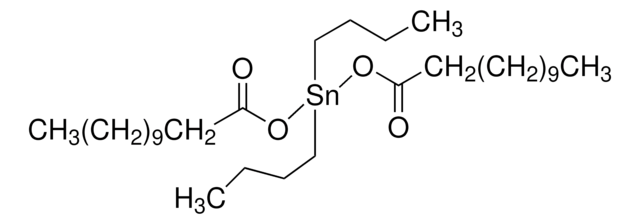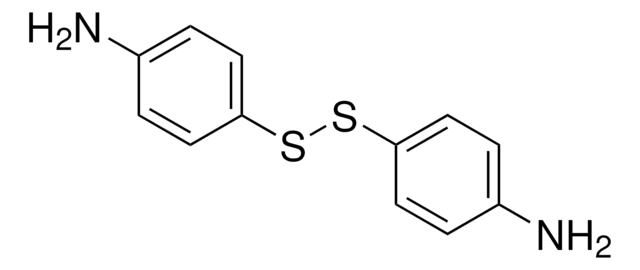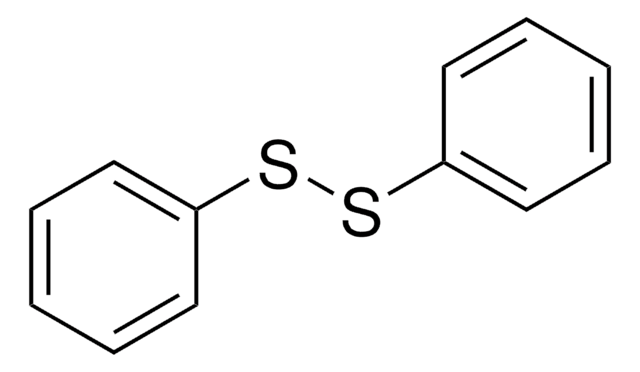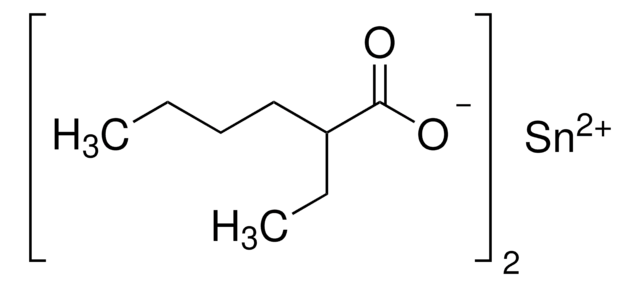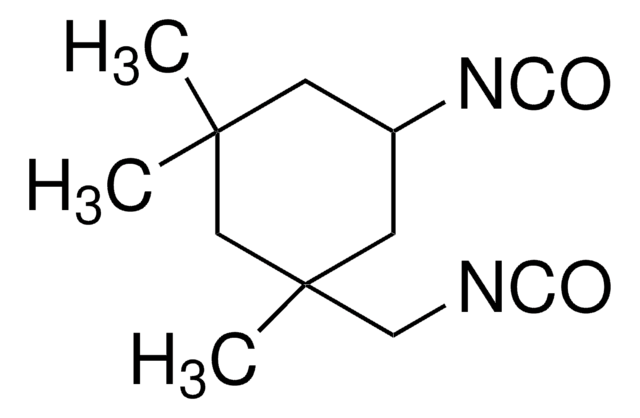380474
2-Hydroxyethyl disulfide
technical grade
Sinônimo(s):
2,2′-Dithiodiethanol, Bis(2-hydroxyethyl) disulfide
About This Item
Produtos recomendados
grau
technical grade
Nível de qualidade
forma
liquid
índice de refração
n20/D 1.57 (lit.)
pb
158-163 °C/3.5 mmHg (lit.)
pf
25-27 °C (lit.)
densidade
1.261 g/mL at 25 °C (lit.)
cadeia de caracteres SMILES
OCCSSCCO
InChI
1S/C4H10O2S2/c5-1-3-7-8-4-2-6/h5-6H,1-4H2
chave InChI
KYNFOMQIXZUKRK-UHFFFAOYSA-N
Procurando produtos similares? Visita Guia de comparação de produtos
Categorias relacionadas
Descrição geral
Aplicação
- A chain extender in the preparation of waterborne self-healing polyurethane, which is used in leather coating.
- As a precursor in the synthesis of multifunctional initiator, which is used in the preparation of star polystyrenes by atom transfer radical polymerization of styrene.
- A starting material to prepare a disulfide-based branching agent. This branching agent is used to synthesize highly branched poly(2-hydroxypropyl methacrylate).
Palavra indicadora
Danger
Frases de perigo
Declarações de precaução
Classificações de perigo
Acute Tox. 3 Oral - Eye Dam. 1
Código de classe de armazenamento
6.1C - Combustible acute toxic Cat.3 / toxic compounds or compounds which causing chronic effects
Classe de risco de água (WGK)
WGK 3
Ponto de fulgor (°F)
233.6 °F - closed cup
Ponto de fulgor (°C)
112 °C - closed cup
Equipamento de proteção individual
Eyeshields, Faceshields, Gloves, type ABEK (EN14387) respirator filter
Escolha uma das versões mais recentes:
Já possui este produto?
Encontre a documentação dos produtos que você adquiriu recentemente na biblioteca de documentos.
Nossa equipe de cientistas tem experiência em todas as áreas de pesquisa, incluindo Life Sciences, ciência de materiais, síntese química, cromatografia, química analítica e muitas outras.
Entre em contato com a assistência técnica